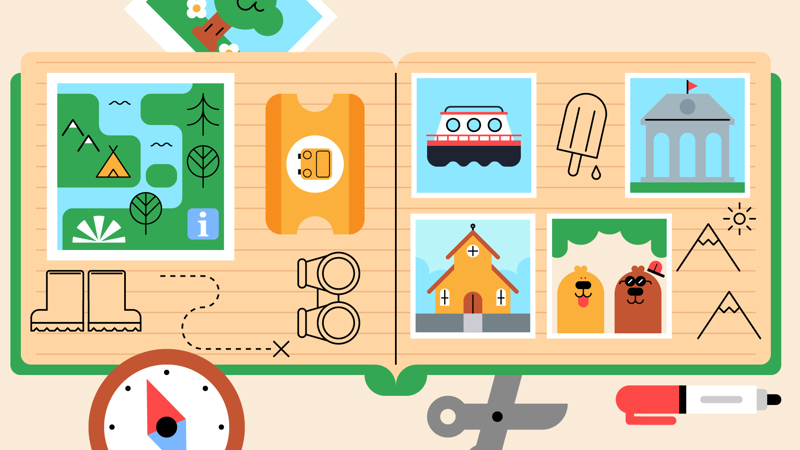
Scout the scenery
You’ll need
- Pens or pencils
- A4 paper
- Camera or phone
- Ordnance Survey maps
- Appropriate footwear such as walking shoes or boots
- All-weather hiking clothes
Before you begin
- Select a city, town or village to visit and plan how to travel there, using public transport or walking. You could incorporate your hike into a camp or overnight stay somewhere unfamiliar.
- If you’re walking there, make sure everyone has the right weatherproof kit.
- When planning for the Hikes Away Staged Activity Badge, make sure your chosen route meets the time requirements for your section.
- Consider the terrain on your route and read the Terrain Zero information.
Start planning
- The person leading the activity should separate everyone into small groups, each with someone who can help with map reading and route planning.
- Each group should spread an Ordnance Survey map out so everyone can see. The person leading the activity should point out the destination of the walk.
- Everyone should look at the map and use the map symbols to identify any interesting features on the route, such as historic places, water, museums or places of worship.
- Everyone should talk about how their hiking route might differ from where they live.
Head out on your hike
- Everyone should follow the map and planned route, noticing the differences and similarities they talked about earlier.
- The group could chat to local people to find out about living in this area.
- Visit any features spotted on the map and make sketches or take photographs.
Reflection
This activity encouraged everyone to be active while exploring an area they’re not familiar with. Everyone should talk about how they’re feeling during the hike: are they energised, refreshed or a little tired? Hiking is about endurance and perseverance rather than speed or strength, so everyone should remember to slow down and take in the views. They should also support each other along the way.
What similarities and differences are there between where everyone lives and where they went on their hike? Were the buildings older or newer, was it busier or quieter, or were there any unique sights? Everyone should think about whether they’d enjoy living in the new area – chatting with local people might give them a good insight. Would anyone visit again? It’s worth remembering everyone has different thoughts on where’s best to live. Some people like living in the country and others prefer the buzz of a city. Learning about different communities shows that everyone’s part of a larger community of people.
Safety
All activities must be safely managed. You must complete a thorough risk assessment and take appropriate steps to reduce risk. Use the safety checklist to help you plan and risk assess your activity. Always get approval for the activity, and have suitable supervision and an InTouch process.
- Outdoor activities
You must have permission to use the location. Always check the weather forecast, and inform parents and carers of any change in venue.
- Hiking and walking
Follow the guidance for activities in Terrain Zero, or the guidance for each the adventurous activity.
- Phones and cameras
Make sure parents and carers are aware and have given consent for photography.
Add some challenges for everyone on the hike such as picking up some litter dropped by other people, buying snacks for the group, or taking a photo of the oldest building they see.
Before the hike, check the route is accessible for the whole group.
All Scout activities should be inclusive and accessible.
Take photos of the interesting things you see on the walk. This will help you work towards your Photographer Activity Badge.
Encourage young people to make the hike their own by planning the route around places they’d like to explore.
